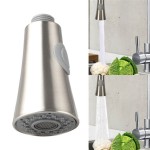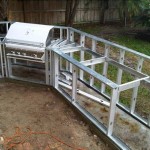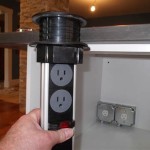An undermount kitchen sink is a stylish and practical choice for any modern kitchen. Unlike traditional top-mounted sinks, undermount kitchen sinks are installed by mounting them beneath the countertop, resulting in a sleek and seamless look. Undermount sinks are available in a variety of materials, styles, and sizes, making them suitable for any kitchen design. In this article, we will discuss the advantages of an undermount kitchen sink, the different varieties available, and how to properly install one in your kitchen.
Advantages of an Undermount Kitchen Sink
Undermount kitchen sinks offer a number of advantages over top-mounted sinks. For one, they provide a cleaner, more streamlined look to the kitchen. The sink is installed beneath the countertop, which eliminates the need for a visible lip and makes for an easier cleaning process. The lack of a lip also prevents dirt and debris from getting trapped in the sink, which can be difficult to clean out. Additionally, undermount sinks are easier to install, as they are fastened to the underside of the countertop, rather than the top.
Undermount sinks are also typically made from more durable materials than traditional top-mounted sinks. Materials such as stainless steel and granite are often used for undermount sinks, which can help to increase the longevity of the sink. Additionally, undermount kitchen sinks are typically more affordable than top-mounted sinks, making them a great option for any budget-conscious homeowner.
Types of Undermount Kitchen Sinks
Undermount kitchen sinks come in a variety of materials, styles, and sizes, making them suitable for any kitchen design. The most popular materials for undermount sinks are stainless steel and granite, but they are also available in acrylic, copper, and other materials. Additionally, undermount sinks can be found in a range of sizes, from small single-bowl sinks to large double-bowl models. You can also choose from a variety of styles, such as apron-front sinks, top-mount sinks, and drop-in sinks.
Installing an Undermount Kitchen Sink
Installing an undermount kitchen sink is a relatively straightforward process. Start by measuring the area where the sink will be installed. Be sure to account for any obstructions, such as pipes, and make sure that the sink will fit in the space. Next, cut the countertop to fit the sink. Use a template to mark the cutout area, then use a circular saw to make the cut. Use a file to smooth out any rough edges, then apply sealant to the underside of the countertop.
Once the countertop has been cut, you can mount the sink to the underside of the countertop. Use an appropriate adhesive to attach the sink to the countertop, then use a caulk gun to seal the edges. Finally, use a level to check that the sink is level, then connect the plumbing to the sink. Once the plumbing is connected, you’re ready to enjoy your new undermount kitchen sink!
Conclusion
Undermount kitchen sinks are a stylish and practical choice for any modern kitchen. They provide a cleaner, more streamlined look and are available in a variety of materials, styles, and sizes. Installing an undermount sink is a relatively straightforward process, but it’s important to make sure that the sink is properly installed for a successful installation. With these tips, you can easily install an undermount kitchen sink in your home and enjoy its many benefits.















Related Posts








